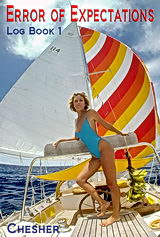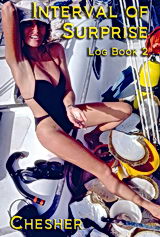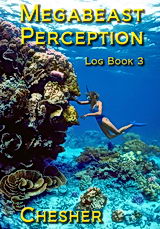Australian Dolphin Update
The world's Loneliest Dolphin
Demon lies listlessly in the seal pool at Sydney's Taronga Zoo. He is now 30 years old. Captured at five, he spent his time between four oceanariums before being bought by Stafford Bullen in 1977 for his African Lion Safari at Warragamba in Sydney's west.
Last year his three mates died and in February Bullen was forced to sell the park when the NSW Government bought in regulations that would force the upgrading of many of its facilities. The Government offered to keep Demon temporarily at Taronga until another oceanarium could take him.
Steve Romer has been responsible for Demon since he arrived at Taronga. ``Several parks are considering taking Demon and it is my greatest wish he will soon be able to spend his remaining years with his own kind. That is what he deserves.''
New Idea Magazine 8 June 1991 p.14
Of the remaining three dolphins in the Lion Park, two died and the last survivor was sent to the Taronga Park Zoo in Sydney after the Lion Park went bankrupt, from there it was sent to the Sea Life Park in Brisbane where he died.
New South Wales outlawed dolphinaria for recreation, although a large salt water lake near Coffs Harbour is used as a rehabilitation center for injured dolphins.
The Australian National Marine Mammal holding laws were completely overhauled to prevent such mistreatment from happening again, anywhere in Australia.
in 1985 Victoria became the first Australian state to completely outlaw the taking or holding of dolphins or other marine mammals.
South Australia followed.
The oceanarium in Perth closed down and the dolphins were placed in a half-way house for six months and then released back into the ocean. Three were later recaptured, the others survived and were seen in the company of wild dolphin pods.
In 1984, three years after our efforts to restructure Australia's thinking about captive dolphins, Marine World Victoria applied for a permit to build an US$ 18 million oceanarium to house at least a dozen captive cetaceans. The Australian Senate appointed a Select Committee on Animal Welfare. It held a series of public hearings in 1985 and received voluminous testimony on the issue of "Dolphins and Whales in Captivity."
In December 1985, the committee issued a 117 page report "Dolphins and Whales in Captivity," (Australian Government Publishing Service Canberra) citing extensive public criticism of oceanaria "for painful and stressful capture techniques, the high mortality rate of captive cetacea, and a captive environment which was not able to provide for the cetacean's social or biological needs."
The committee concluded "that the benefits of oceanaria in Australia for humans and cetacea are no longer sufficient to justify the adverse effects of capture for captivity." The Committee recommended that no new facilities be established in Australia, that existing oceanaria be allowed to continue, and "the keeping of cetacea should eventually be phased out unless further research justifies their continuance."
The press coverage of the Dolphin Referendum in Sydney kicked off a series of global conferences on the ethics of holding marine mammals captive. In June 1983 there was a Whales Alive" conference (Global Conference on the Non-Consumptive Utilisation of Cetacean Resources) held at the New England Aquarium in Boston.
Another conference was held in February 1984 at the John G. Shedd Aquarium in Chicago. The Ethics and Law Working Group included representatives from the circus display crowd and Hubbs-Sea World "Research Institute". They concluded there was a "moral obligation" for the "compassion and humane treatment to animals in captivity."
The April 1990 "Earth Week" in Ottawa, Canada, included a symposium entitled "Whales In Captivity: Right or Wrong?", participants included marine parks, whale scientists and environmentalists. Blah Blah Blah - a week of arguing and bickering simply added more smoke and confusion to this rather simple and clear cut problem.
In July 1990, in Geneva, the Bellerive Symposium on Whales and Dolphins in Captivity had no representatives from the circus display industry and the Chairman's concluded: "Whales and dolphins are self-aware beings that routinely make decisions and choices about the details of their lives. They are entitled to freedom of choice. Thus, they are entitled to freedom. Imprisoning them in captivity is, quite simply, wrong."
Today, in Australia, only Queensland allows dolphins to be kept in captivity for circus shows, largely due to the political prowess of the owner of the Sea Life Park in Brisbane, which I hope you will never visit.
My dream of seeing humans interacting with dolphins in the sea has become reality, without any additional help from me.
A man in Western Australia decided to ask a
group of dolphins to come into a beach to play with disabled children. He swam with them
for several months, getting closer and more familiar with each day. Somehow they figured
out what he wanted and they did, indeed, go to the beach to play with disabled children.
The children come from all over Australia and the remarkable joy the dolphins bring them
is stunning. It is important that the dolphins are not enticed with food and have never
been fed to play with the children. They do it for love.
Dolphin
watching and swimming with wild dolphins is now a major tourist activity
in Australia and New Zealand. In New South Wales alone there are now
more than 50 operators conducting cetacea-based tourism activities.
They range from watching humpback whales and dolphins in Merimbula to
sea kyacking with dolphins in Byron Bay. A bevy of laws protect
the rights of the wild dolphins from overzealous tourism operators.
It is against Federal whale-watching guidelines to swim with dolphins
or whales except under carefully regulated and licensed tourism operators.
The industry is worth about $10,000,000 a year. Stafford Bullen missed
out in a big way.
Australia
imposes fines up to $100,000 and jail terms for killing, injuring, or
deliberately interfering with whales or dolphins.
Dolphin and whale watching is also a major industry In the United States. There has been a steadily growing opposition to keeping dolphins and whales in circus tanks for the amusement of the unfeeling public mind. But Orcas and dolphins are still imprisoned in circus swimming pools (including "research" facilities). Greenpeace still isn't quite sure if this is OK or not. Dolphins and whales are still being slaughtered at sea, despite the fact that Greenpeace has become more respectable and thousands of hours of conferences and workshops have belabored the issue of murder of the mind of the waters.
Free Willy, a major motion picture made the plight of captive killer whales internationally known. But the star, freed in the film, was never actually released.
The "Captive Marine Mammal" cartel has often said that releasing dolphins into the wild would result in their death. Ignoring the fact that the majority of their captives die even faster in their inadequate facliities there is now a growing body of information about what happens to dolphins after release. Marine Mammologist Ken Balcome sums up some of the release information here:
http://www.rockisland.com/~orcasurv/releases.htm
Do Something
If you think committees or organizations will "do something," about these interspecies atrocities, you are helping perpetuate the decline of the intelligence of this planet: both human and cetacean intelligence.
"Somebody should do something," is the rally-cry of the whimps. If you see insanity and immorality, don't organize, don't run to authority. Aren't YOU somebody? What can you do about it? This is the real moral of the dolphin episode. The way to save our planet is personal responsibility; individual action. We may be trapped in our destined paths, but we still have the ability to nudge the megabeast in the right direction. If we want to.
Since this is a very important and serious issue, it just now occurs to me the I Ching should have something to add to this. Boldly, I get out my coins and take the Honored Sage off Moira's starboard bookshelf. I rattle the coins, throw them and here is what I Ching has to say when I ask it if it has anything to add about individual action in the fight to end Mankind's stupidity against Mankind's own environment.
"45. Break-Through - Resoluteness." I Ching explains, "In a resolute struggle of the good against evil, there are definite rules that must not be disregarded, if it is to succeed. First, resolution must be based on a union of strength and friendliness. Second, a compromise with evil is not possible; evil must under all circumstances be openly discredited. Third, the struggle must not be carried on directly by force. If evil is branded, it thinks of weapons, and if we do it the favor of fighting against it blow for blow, we lose in the end because thus we ourselves get entangled in hatred and passion. Therefore it is important to begin at home, to be on guard in our own persons against the faults we have branded. In this way, finding no opponent, the sharp edges of the weapons of evil become dulled."
Man-alive! There it is. The I Ching does it again.
Environmental problems can only be solved by each individual doing the right thing themselves. That's how to fight. The battle will never be won by institutions fighting institutions. Don't donate, act. Save your money and your time. Boycott the nasties. Stay away from dolphinaria and Sea Worlds and Marine-Lands in droves.



